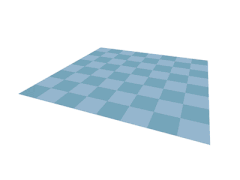
Torus

In geometry, a torus (plural tori) is a surface of revolution generated by revolving a circle in three-dimensional space about an axis that is coplanar with the circle. If the axis of revolution does not touch the circle, the surface has a ring shape and is called a torus of revolution. If the axis of revolution is tangent to the circle, the surface is a horn torus. If the axis of revolution passes twice through the circle, the surface is a spindle torus. If the axis of revolution passes through the center of the circle, the surface is a degenerate torus, a sphere. If the revolved curve is not a circle, the surface is a related shape, a toroid. Real-world objects that approximate a torus of revolution include swim rings and inner tubes. Eyeglass lenses that combine spherical and cylindrical correction are toric lenses. A torus should not be confused with a solid torus, which is formed by rotating a disk, rather than a circle, around an axis. A solid torus is a torus plus the volume inside the torus. Real-world objects that approximate a solid torus include O-rings, non-inflatable lifebuoys, and ring doughnuts. In topology, a ring torus is homeomorphic to the Cartesian product of two circles: S1 × S1, and the latter is taken to be the definition in that context. It is a compact 2-manifold of genus 1. The ring torus is one way to embed this space into Euclidean space, but another way to do this is the Cartesian product of the embedding of S1 in the plane with itself. This produces a geometric object called the Clifford torus, a surface in 4-space. In the field of topology, a torus is any topological space that is topologically equivalent to a torus. A coffee cup and a doughnut are both topological tori. A torus can be defined parametrically by:
